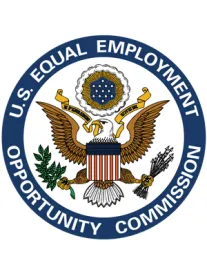The Equal Employment Opportunity Commission has issued Proposed Enforcement Guidance on Unlawful Harassment. The 75-page Proposed Guidance follows a Report from the Commission’s Select Task Force on the Study of Harassment in the Workplace. This Task Force was co-chaired by Republican Commissioner Victoria A. Lipnic (now Acting EEOC Chair) and Democratic Commissioner Chai R. Feldblum. The EEOC is inviting interested persons to provide comments to the Proposed Guidance by February 9, 2017.
The EEOC’s Guidance sets out to achieve the following: defining what constitutes harassment, examining when a basis for employer liability exists if harassment is proven, and finally, offering suggestions for preventive practices.
EEOC Guidance does not have the force of law. However, it is important because it serves as a reference for EEOC investigators and other federal agencies that address harassment through enforcement investigations, litigation, or outreach. While the Proposed Guidance will be updating the 1990 EEOC Guidance, which addressed only sexual harassment, the Proposed Guidance deals with all categories of harassment: sex (including LGBT discrimination), religion, age, national origin, disability, and genetic information.
Hostile work environment law has developed significantly since the Commission issued its 16-page 1990 Guidance. We will discuss:
-
the EEOC’s views on the scope of harassment claims;
-
the fundamental framework of harassment law as set forth by the Commission;
-
points made by the EEOC Guidance that may be helpful in preparing a position statement or defending a claim;
-
other important EEOC positions on specific harassment issues; and
-
recommended preventive practices, including handbook policies, investigations, and training.
Types of Harassment
According to the Proposed Guidance, the EEOC will find harassing conduct to be unlawful if the conduct is based on the following:
-
An individual’s race, color, or national origin.
-
An individual’s religion.
-
An individual’s age.
-
An individual’s disability.
-
An individual or family member’s genetic test or family medical history.
With respect to sex-based harassment, the Proposed Guidance recites the familiar definition that sex-based harassment is based on a complainant’s sex or gender. The Commission specifies the following as sex-based harassment:
-
Harassment based on an individual’s non-conformance with social or cultural expectations of how men and women usually act, including gender-stereotyped assumptions about family responsibilities.
-
Harassment based on pregnancy, childbirth, or related medical condition, including lactation.
-
Harassment based on gender identity, including transgender or transitioning status and includes using a name or pronoun with the individual’s gender identity in a persistent or offensive manner.
-
Harassment because an individual is lesbian, gay, bisexual, or heterosexual.
Fundamental Framework
The Proposed Guidance sets forth the circumstances by which an employer will be liable for unlawful harassment:
-
Alleged conduct must be based on a complainant’s legally protected status.
-
Where the harassment results in an explicit change to the terms or conditions of employment, discrimination and liability are clear. For example, terminating an employee because he or she rejected sexual advances.
-
Where there is no explicit change in employment status, the employee must prove a hostile work environment: conduct that is sufficiently severe or pervasive to alter the conditions of employment and create an abusive or hostile work environment.
-
To establish a hostile work environment, the employee must show that: (1) the conduct would be viewed objectively (by a reasonable person) to be hostile or abusive; and (2) the employee subjectively perceives the environment to be hostile or abusive.
-
For hostile work environment claims where there is no explicit change in employment, there must be a basis for employer liability, and this depends on the status of the alleged harasser.
-
Assuming no tangible employment action is taken for a hostile work environment created by supervisors, an employer may assert a two-part affirmative defense. The employer may avoid liability by showing: (1) it exercised reasonable care to prevent and correct promptly any harassment; and (2) the employee unreasonably failed to take advantage of any preventive or corrective opportunities provided by the employer or to take other steps to avoid harm from the harassment.
-
For harassment by non-supervisors and non-employees, an employer is liable where it is negligent. The EEOC will find negligence if an employer either failed to act reasonably to prevent harassment or failed to take reasonable corrective action in response to harassment about which it knew or should have known.
Positions Potentially Helpful to Employers
On certain issues, the Proposed Guidance takes positions that reflect the Commission understands the challenges of maintaining a harassment-free workplace. These EEOC positions may be useful authority to cite when an employer is defending a claim of harassment:
-
If many employees in different protected classes are harassed, that may be evidence the harassment was not based on a protected characteristic, but was offensive and bullying conduct instead. In these types of situations, the Commission nonetheless would find the conduct unlawful if it involves explicitly denigrating an employee based on his or her protected status or if one protected group receives a bigger dose of mistreatment than other protected groups.
-
Preferential treatment based on consensual sexual relationships does not amount to discrimination against disfavored employees based on their sex (such as a female boss who repeatedly promotes her boyfriend) because such a preference disadvantages men and women alike. However, broad sexual favoritism to one sex (for example, a male supervisor who promotes only women who provide him with sexual favors) can constitute harassment for members of that sex.
-
Complaints that a coworker’s conduct were “rude” or “aggravating” are not enough to put an employer on notice of harassment.
-
Whether harassment stops after an employer’s investigation or corrective action is a key factor in determining whether the corrective action was appropriate. However, if an employer takes corrective action that is proportionate to the conduct, the employer will be found to have taken appropriate corrective action even if the harassment occurs again.
-
Although an individual complaining of harassment ideally should face no adverse consequences, the employer may place some burdens on the complaining employee as part of the corrective action it imposes on the harasser, as long as it makes every reasonable effort to minimize those burdens.
-
The Proposed Guidance acknowledges that employers may have fewer options for influencing the conduct of non-employees (for example, a non-employee assigned to work in an employer’s workplace) and conduct that occurs outside the workplace.
-
Where an employer conducts a thorough investigation but is unable to determine with sufficient confidence that the alleged harassment.
-
While employers should not ban all religious communication from the workplace, employers are not required to accommodate religious expression that creates or threatens to create a hostile work environment.
-
In its updated Retaliation Guidance issued in 2016, the EEOC took the position that employers may not take adverse action based on an employee’s complaints of discrimination that are made through the company’s own equal employment opportunity complaint process, regardless of whether a complaint was made in bad faith. The Proposed Unlawful Harassment Guidance permits employers to promise non-retaliation only for complaints made in “good faith,” implicitly permitting adverse action against employees who make bad faith complaints.
Other Specific Points in Proposed Guidance
The EEOC’s Proposed Guidance also takes the following positions:
-
Employees are protected against unlawful harassment by non-employees, such as independent contractors, customers, hospital patients, nursing home residents, and clients.
-
Harassment based on the perception that an individual has a particular characteristic, or a belief that someone is of a particular race, is protected by federal law even if the perception is incorrect. For example, harassment of a Hispanic employee because the harasser believes the individual is Pakistani is unlawful national origin discrimination.
-
Harassment against a complainant because he associates with individuals of a different protected class is unlawful. For example, harassing conduct toward a non-Hispanic employee because she is married to a Hispanic man is unlawful.
-
Harassment based on a complainant’s protected characteristic is covered even if the harasser is a member of the same protected class.
-
Discriminatory conduct is unlawful even if the conduct is not directed at a particular worker. As an example, the Proposed Guidance describes workers in an open office environment who regularly engage in derogatory banter about gay men and lesbians. A gay employee who overhears these statements has been subject to discrimination even though he was not the target of the comments.
-
In certain circumstances, hearsay accounts of harassing conduct directed to other employees may contribute to a hostile work environment of an employee.
-
Harassing conduct need not harm the complainant’s work performance, or result in psychological harm, so long as the evidence establishes the conduct was sufficiently severe or pervasive to alter the terms or conditions of employment.
-
Certain isolated severe actions are sufficient in and of themselves to constitute an unlawful hostile work environment: sexual assault, sexual touching of an intimate body part, physical violence or the threat of physical violence, use of symbols of violence or hatred (e.g., swastika, Klansman’s hood, or noose), use of the “n-word” by a supervisor, use of animal imagery, or threats to deny job benefits for rejecting sexual advances.
-
A complainant may welcome certain conduct, such as sexually tinged banter from one particular employee, but welcoming such conduct from one employee does not mean that he or she is authorizing and welcoming such conduct from another employee.
-
Conduct can establish a hostile work environment even is some members of the complainant’s protected class did not find it offensive.
-
Indicating a sliding scale, the EEOC will look at “other personal characteristics” of a particular complainant to determine whether he or she reasonably believes certain conduct creates a hostile work environment. As examples, the Commission mentions conduct directed to a teenager by a much older individual and undocumented workers who might fear a heightened risk of deportation.
-
Prevailing workplace culture does not excuse discriminatory conduct. According to the EEOC, there is no “crude environment” exception to Title VII.
-
Continuation of borderline conduct after an employee requests the conduct cease may tip such conduct into the category of actionable harassment. Examples include flirtatious behavior, asking an individual out on a date, or attempting to persuade a non-religious employee of the importance of religion.
-
Conduct occurring outside work can have consequences in the workplace and contribute to a hostile work environment. The EEOC discusses an African-American employee subjected to racist slurs and physically assaulted on a city street. According to the Commission, the mere presence of those same coworkers in the African-American employee’s workplace can result in a hostile work environment.
-
A supervisor who denigrates an employee based on race or sex (or other protected trait) in non-work social media will be considered to have contributed to a hostile work environment against that employee.
-
There are certain members of management who are high enough in the chain of command to be considered the alter-ego or proxy of an employer. According to the Commission, an employer automatically is liable for unlawful harassment by an alter-ego or proxy of the employer and has no defense. In an “Example” in the Proposed Guidance, the EEOC finds a corporate vice-president who manages a company’s operations to be an alter ego.
-
An employer will lose its defense of taking corrective action even where a harassment victim fails to report harassment to human resources, but a supervisor other than the harasser is aware of the alleged harassment and fails to report the alleged harassment to human resources.
-
An employer has notice of harassment when employees who are not supervisors, but have “lead” roles, are aware of harassment. As an example, the EEOC finds an employer had notice of harassment when an employee complained of harassment to his “yard lead,” who was supposed to report “all problems” to management.
-
An employee is absolved from reporting harassment to human resources where an employee reasonably believes the complaint process is ineffective or there would be retaliation for complaining. Such situations include the harasser being close friends with responsible human resources personnel or threats by the harasser to terminate the complainant if he reports the harassment to human resources.
-
An employee who fails to use the employer’s complaint process, and instead files a union grievance or an EEOC charge of discrimination may be found to have taken reasonable steps to avoid harassment.
-
In all cases, an employer needs to take proportionate corrective action in response to a valid complaint. The fact that harassment “fortuitously stops” will not absolve an employer from liability.
Prevention and Avoidance
At the end of the Proposed Guidance, the EEOC sets forth Promising Practices. This section emphasizes the need for senior leaders to create and maintain a culture of respect in which harassment is not tolerated, including:
-
allocating sufficient resources for effective harassment prevention strategies,
-
assessing harassment risk factors, and
-
taking steps to minimize or eliminate those risks.
Anti-Harassment Policy
The EEOC recommends every company should have an anti-harassment policy that is written and communicated in a clear, easy-to-understand format, translated to all languages commonly used by employees, provided to employees upon hire, during trainings, placed on the company’s intranet, in the employee handbook, and locations commonly frequented by employees. The policy should be periodically reviewed and updated, as needed. The EEOC expects anti-harassment policies to contain the following 10 components:
-
An unequivocal statement that harassment based on any legally protected characteristic is prohibited and will not be tolerated.
-
An easy-to-understand description of prohibited conduct, including examples.
-
A description of the organization’s harassment complaint system, including multiple (if possible), easily accessible reporting avenues.
-
A statement that employees are encouraged to report conduct that they believe constitutes unlawful harassment (or that, if left unchecked, may rise to the level of unlawful harassment), even if they are not sure the conduct violates the policy.
-
A statement that the employer will provide a prompt, impartial, and thorough investigation.
-
A statement that the identity of individuals who report harassment, alleged victims, witnesses, and alleged harassers will be kept confidential to the extent possible consistent with a thorough and impartial investigation depending on any relevant legal requirements.
-
A statement that employees are encouraged to respond to questions or to otherwise participate in investigations into alleged harassment.
-
A statement that information obtained during an investigation will be kept confidential to the extent possible, consistent with a thorough and impartial investigation and in keeping with relevant legal requirements.
-
An assurance that the organization will take immediate and proportionate corrective action if it determines that harassment has occurred.
-
An unequivocal statement that retaliation is prohibited and will not be tolerated, and an assurance that alleged victims, individuals who in good faith report harassment or participate in investigations, and other relevant individuals will be protected from retaliation.
Complaint System/Investigations
The Proposed Guidance recommends that a complaint system follow the same principles outlined above relating to an employer’s anti-harassment policy. In addition, the EEOC recommends that an employer’s complaint system and investigation process:
-
Welcome questions, concerns, and complaints and encourage reporting of problematic conduct;
-
Treat alleged victims, witnesses, and alleged harassers with respect;
-
Include processes to determine whether alleged victims, individuals who report harassment, and witnesses are subjected to retaliation and to impose sanctions on individuals engaging in retaliation;
-
Include processes to ensure that alleged harassers are not prematurely presumed guilty or prematurely disciplined for harassment;
-
Include processes to convey the resolution of the complaint to the complainant and the alleged harasser;
-
Utilize well-trained, objective, and neutral personnel for investigating and resolving complaints;
-
Take all questions, concerns, and complaints seriously;
-
Create and maintain an environment in which employees feel comfortable reporting harassment; and
-
Appropriately document every complaint from initial intake to investigation to resolution, using guidelines to weigh the credibility of all relevant parties, and prepare a written report documenting the investigation, findings, recommendations, and disciplinary/corrective/preventive action imposed (if any).
Anti-Harassment Training
The Proposed EEOC Guidance views regular, interactive, comprehensive training of all employees as essential in ensuring that the workforce understands an employer’s harassment policies and complaint system. The Proposed Guidance states that training should be championed by senior leaders, repeated and reinforced regularly, provided to employees at every level and location of the organization, provided in all languages commonly used by employees, tailored to the specific workplace and workforce, conducted by qualified, live, interactive trainers, if feasible, and routinely evaluated and revised as necessary.
The Commission considers harassment training effective if such training provides:
-
descriptions of unlawful harassment and conduct that, if left unchecked, might rise to the level of unlawful harassment;
-
information about employees’ rights and responsibilities if they experience, observe, or become aware of conduct they believe may be prohibited;
-
explanations of the complaint process; and
-
explanations of the range of possible consequences for engaging in prohibited conduct.
The Proposed Guidance contemplates separate training for supervisors and managers that provides enhanced guidance on how to prevent, identify, stop, report, and correct harassment, additional guidance on avoiding retaliation, and the consequences for supervisors and managers who do not fulfill their anti-harassment and anti-retaliation duties.
The U.S. Supreme Court has stressed that an employer’s anti-harassment obligations do not create a code of workplace civility. However, the EEOC suggests that employers consider workplace civility training or bystander intervention a helpful addition to anti-harassment training. The Proposed Guidance does not express such training as a requirement. Rather, the Proposed Guidance notes the EEOC’s Select Task Force found that such training has shown significant promise for preventing harassment in the workplace.
Most employers have been keenly aware of the need to prevent and correct unlawful conduct and accordingly have devoted significant resources into anti-harassment efforts. The breadth and depth of the Proposed Guidance shows this area of the law is exceedingly challenging. You are encouraged to discuss issues raised in the Proposed Guidance and workplace harassment issues and practices with the Jackson Lewis attorneys with whom you work.







 />i
/>i

